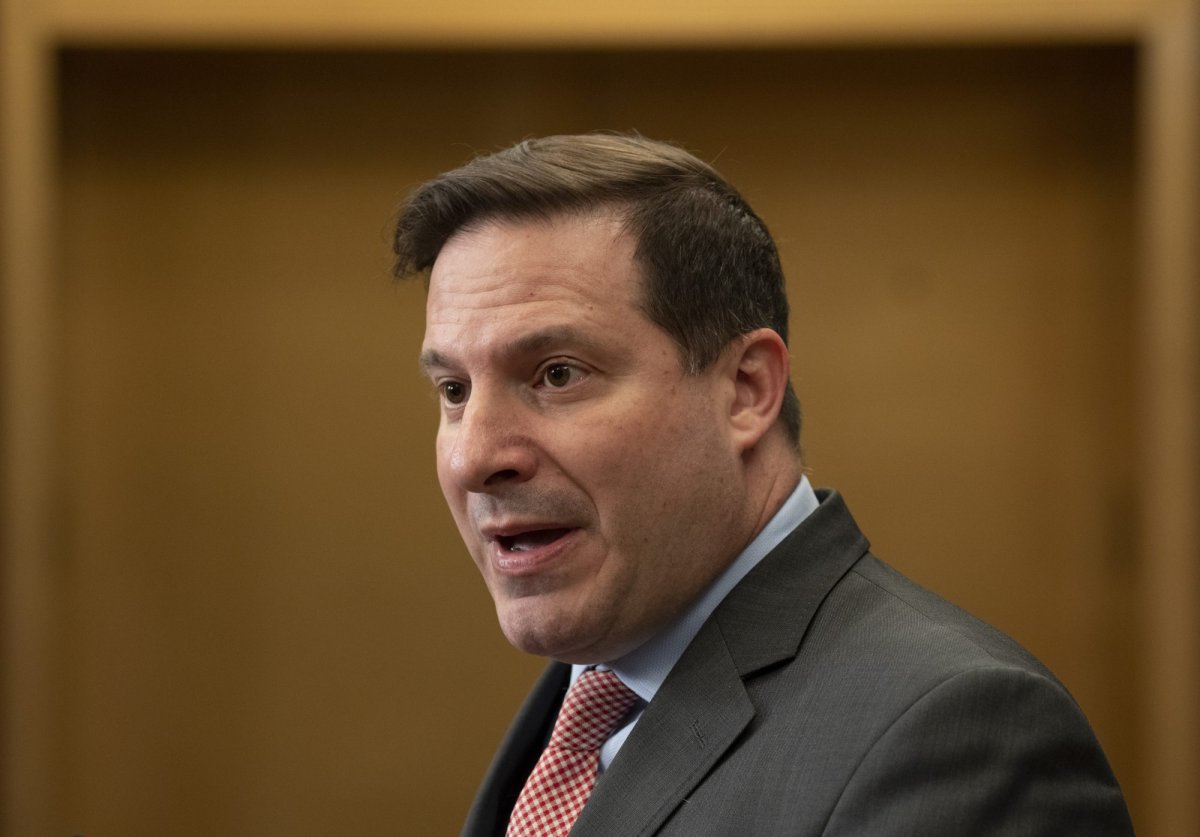The Liberal government will table legislation that includes reforms to Canada’s bail laws before the House of Commons rises for the summer, Public Safety Minister Marco Mendicino says.

Asked by Mercedes Stephenson about a timeline for the proposed reforms during an interview on The West Block that aired Sunday, Mendicino said there will be an announcement “in the not-too-distant future” that will address not just bail but other investments to law enforcement.
“The short answer is yes,” he said when asked directly if legislation will come before the end of the spring legislative session, which is currently scheduled to end on June 23.
“We’re committed to dealing with this through reforms to our bail laws, including focusing on repeat violent offenders. … But it’s not just bail reform. We also need to make investments in law enforcement. This is a government that has put nearly $1 billion into supporting law enforcement. We’ll have more to say about that in the not-too-distant future.”

Justice Minister David Lametti committed to move forward quickly on “targeted reforms” to the Criminal Code that would update Canada’s bail system after meeting with his counterparts from the provinces and territories last month.
That request followed premiers’ previous calls for Ottawa to create “reverse onus” measures for certain offences that would require a person seeking bail to prove why they should not stay behind bars.
Lametti has previously expressed hope legislation will be tabled during the spring session, but has not committed to a timeline.
Premiers’ calls for bail reform ramped up early this year after Const. Greg Pierzchala of the Ontario Provincial Police was killed while on duty in late December. Court documents show that one of the two people facing a first-degree murder charge in his death was initially denied bail in a separate case involving assault and weapons, but was later released.
Eight on-duty police officers have been killed in the past seven months, while major Canadian cities like Toronto, Vancouver and Calgary face an ongoing string of mostly random, violent attacks on public transit and in the streets.

Some of those attacks have been fatal, including the death of a 17-year-old boy who was stabbed and killed while riding a bus in Surrey, B.C.
Mendicino said he is also working with Mental Health and Addictions Minister Carolyn Bennett to provide more support to local mental health services in order to stem community violence.
“We’ve got to go after the root causes of crime so that we can stop tragedy and loss before it occurs,” he said.
Gun tracing crackdown
Mendicino’s comments come after he and Lametti signed a series of agreements with their U.S. counterparts following meetings in Ottawa under a rebooted Canada-U. S. Cross-Border Crime Forum.
Chief among them is an agreement for a collaborative crackdown on firearm smuggling across the shared border, including greater information sharing that will improve gun tracing — particularly in Canada.

While the Canadian Justice Department has acknowledged the U.S. is the largest source of illegal firearms that are smuggled north of the border, there has been limited data that tracks exactly how many guns come into Canada every year, where they come from, and what they are used for.
Overall, Canada only traced six per cent of all guns used in crimes and seized by law enforcement in 2019, according to the RCMP’s 2019 firearms report. In 2020, the overall number of traced firearms rose slightly from 1,768 the year before to 2,143, according to the RCMP.
The Canada Border Services Agency says 1,203 firearms were seized at the border over the last fiscal year, up from 548 the year before.
“By strengthening collaboration with the United States, we can go further,” Mendicino said. “That’s how we’re strengthening our borders and stopping the illegal flow of guns into Canada.”

The minister added improved information sharing and gun tracing will illuminate the true scope of gun smuggling from the U.S. into Canada.
Technology upgrades will allow law enforcement on both sides of the border to trace the home-bought or homemade parts used to create s0-called “ghost guns,” which do not have serial numbers and are being increasingly used in violent crimes.
The Canada-U. S. Cross-Border Crime Forum also elicited pledges to combat human smuggling across the border, help stem the flow of opioids such as fentanyl and combat the use of cryptocurrencies in money laundering.
No timeline on gun buyback for individuals
Mendicino, who announced the first phase of a national gun buyback program last week that targets retailers, did not say when the initiative would expand to include individual gun owners.
The government says it has signed a contract with the Canadian Sporting Arms and Ammunition Association to work with businesses and firearms stores to recover about 1,500 models of firearms that were banned two years ago.

Mendicino said stores in Canada have about 11,000 banned guns and related parts in their inventories, though the association hired to help said it did not know where that number came from.
He told Stephenson the program will make businesses “whole” after they give up those firearms.
“First, with the cooperation of gun business owners, we can take a first good bite out of the apple,” he said.
“After that, we’re going to roll out our program which will focus on individual gun ownership.”
The minister would not say when that next phase would roll out, however. He said the federal government will “work with provinces and territories” to implement the program when it comes.
“This is a program that is without precedent,” he added.
- Alberta to overhaul municipal rules to include sweeping new powers, municipal political parties
- Canada, U.S., U.K. lay additional sanctions on Iran over attack on Israel
- Trudeau says ‘good luck’ to Saskatchewan premier in carbon price spat
- No more ‘bonjour-hi’? Montreal mayor calls for French only greetings




Comments